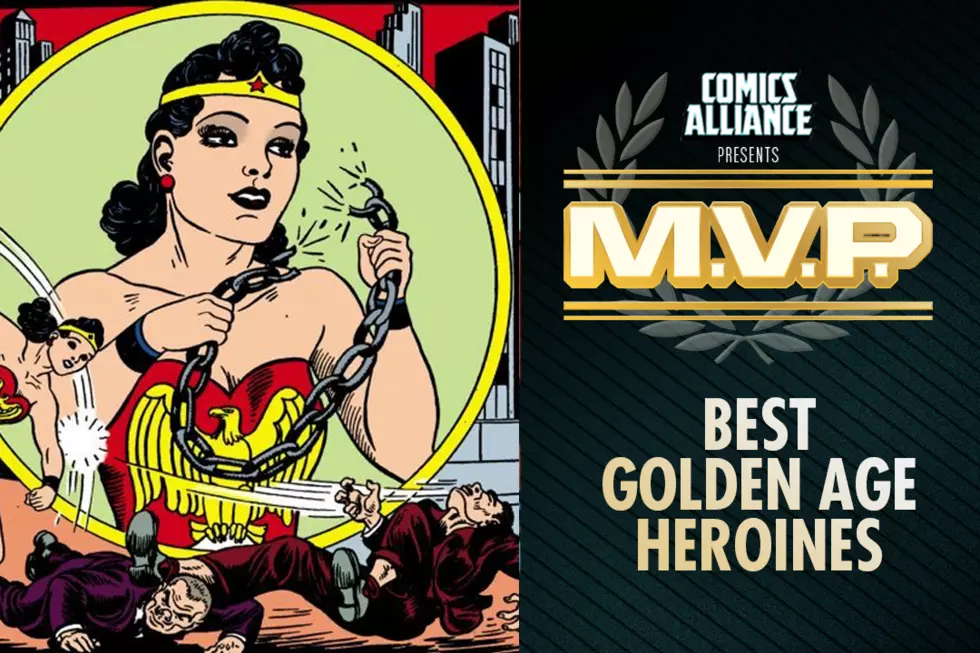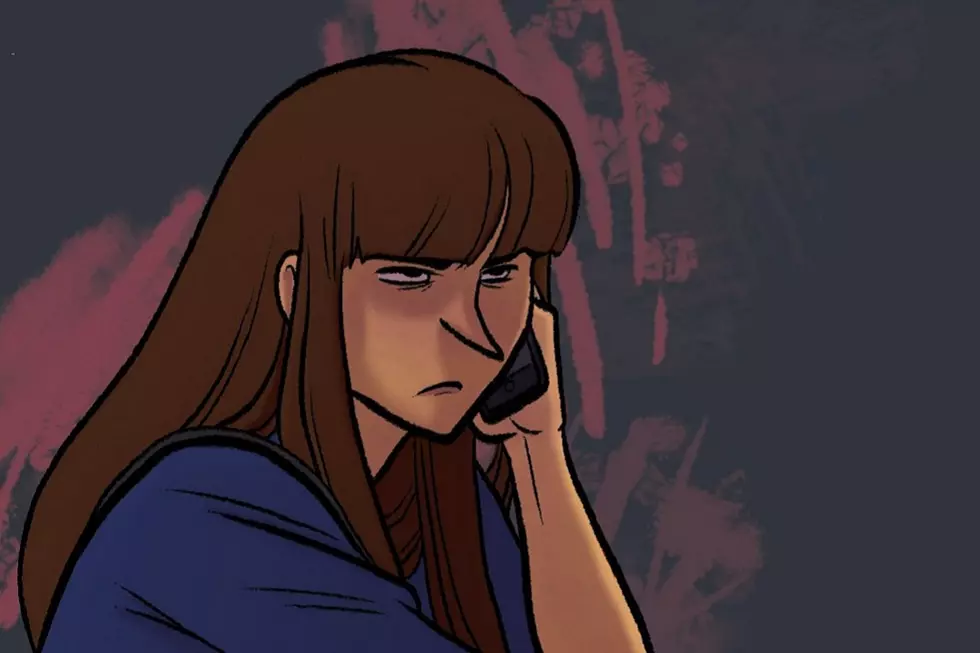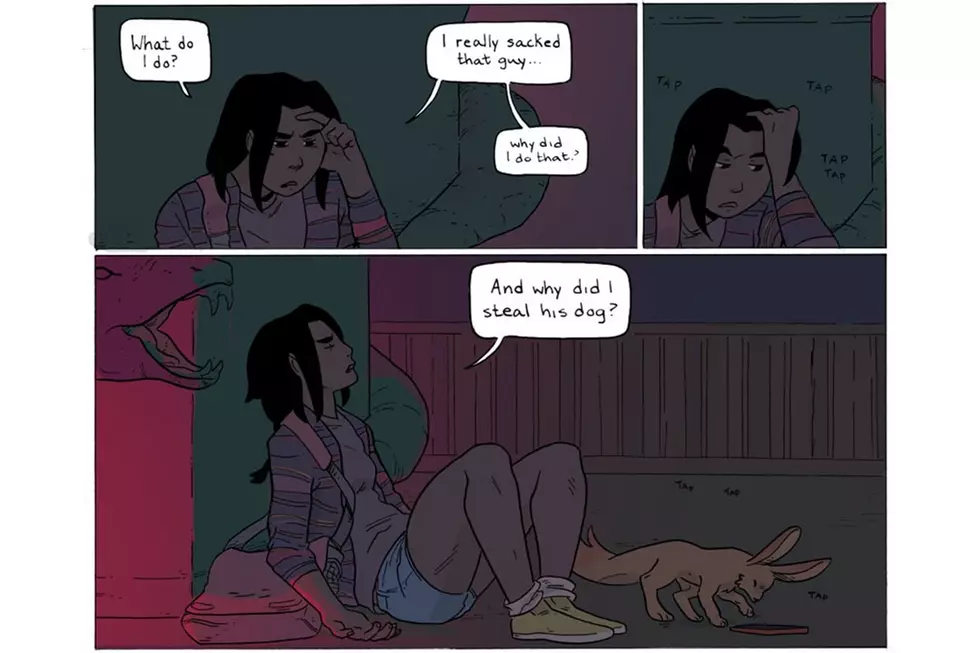
A Life’s Work: 12 Women Who Deserve Lifetime Achievement Recognition
The 43rd Angoulême International Comics Festival takes place in southwestern France this weekend. One of the world's most prestigious celebrations of the art of comics, it's noted for its annual Grand Prix recognizing a living creator for their lifetime contributions to the medium. The winner of the prize becomes the president, ambassador, and star guest of the festival in the following year.
This year's festival was the subject of controversy when the list of creators in contention for the Grand Prix was unveiled, and all 30 nominees were men. The longlist was eventually thrown out in favor of an open vote, which coalesced around three names; Hermann Huppen, Alan Moore, and Claire Wendling. Huppen, known professionally as Hermann, is rumored to have won, despite having said he would decline the award.
The controversy prompted some debate about which women should have been in consideration, with the sort of career and longevity that a lifetime achievement award is meant to recognize. Some people have argued that few eligible women exist, but the reality is that women are undervalued, and the extent of their contributions have been overlooked. We've compiled a list of 12 women who deserve recognition for their lifetime of work in comics, but this is just scratching the surface.
For your consideration:
Aline Kominksy-Crumb
Aline Kominksy-Crumb began creating comics before she met Robert Crumb, but her career and talent is often unfairly eclipsed by his. A contributor to the first issue of Wimmen’s Comix, a founder of the anthology Twisted Sisters, and an editor and contributor to Weirdo, Kominsky-Crumb compared the underground comix scene of 60s and 70s to a boy’s club. Yet she persevered with her explorations of female sexuality and domesticity in her unfiltered, studiedly ugly style, most notably with her autobiographical stand-in character “The Bunch.” [Jennifer de Guzman]
Colleen Doran
Colleen Doran has had a career touching nearly all corners of American comics and wearing all of its creative hats, including illustrating the stories "Dream Country" and "A Game of You." But what earns her consideration above all else is her work on her passion project, A Distant Soil, which has persisted through all the ups and downs that a career in comics entails. A sci-fi saga that is a forerunner of queer-friendly comics and space opera, the story has unfolded over decades, and Doran has never given up on seeing it to its completion. [Charlotte Finn]
Alison Bechdel
Alison Bechdel is one of the most important cartoonists. That sentence doesn’t need any qualifiers, like “female” or “queer” or “of her generation.” By any reasonable standard, Bechdel is one of the most important cartoonists in the industry and in the artform. Bechdel’s comic strip Dykes to Watch Out For ran from 1983 to 2008, and was one of the first ongoing representations of lesbian life. (It was also the origin of “the Bechdel test,” a joke that became a tool for critiquing sexism in media.) Bechdel’s most acclaimed work is Fun Home, a graphic memoir about her childhood and her closeted gay father, which has met with massive acclaim and even became a Tony-winning Broadway musical. [Elle Collins]
Phoebe Gloeckner
Any serious conversation of the best biographical cartoonists in comics has to include Phoebe Gloeckner. It's not just that she's had an interesting life — and she has — but it's the frank, detailed, and innovative ways in which she retells it. Gloeckner fuses prose, medical illustration, and comics art of several different styles to fictionalize her experiences, and the results are often intense. A Child's Life and Other Stories and The Diary of a Teenage Girl are edgy and revealing without being exhibitionistic, and each is a must-have graphic novel that represent the best possibilities of the bio-comic form. [John Parker]
Lynda Barry
Lynda Barry is a believer. She believes you can write and you can draw. Her comic strip Ernie Pook’s Comeek appeared in alternative weeklies all over the United States, and her autobiograpical One! Hundred! Demons! offered one of the few representations of the often chaotic nature of a Filipino extended family — the wall of Tagalog-speaking voices, the smell of vinegar, garlic and oily lumpia. In terms of what is depicted in American comics, this was utterly unique. In recent years, Barry has been teaching writing and cartooning workshops to encourage others to tell their stories. What It Is, the companion book to her writing workshops, won an Eisner Award, and Barry continues to share her wisdom on her blog. [JdG]
Louise Simonson
Louise Simonson has influenced superhero comics to a degree that few women have. In the 1980s she was the editor of Marvel’s X-books. When the line became too big for writer Chris Claremont to handle alone, she became the other key writer of the franchise, replacing Bob Layton on X-Factor and Claremont himself on The New Mutants. She had a hand in storylines like Inferno, and created and wrote Power Pack. In the 1990s she had a popular run on Superman: Man of Steel, where she was a major architect of The Death of Superman and co-created the character Steel. While Simonson is no longer writing at the heart of superhero comics, her influence still echoes through DC and Marvel alike. [EC]
Roz Chast
The New Yorker first published a comic by Roz Chast in 1978, and she has been a staff cartoonist there ever since. She’s authored more than a dozen books, including Can’t We Talk About Something More Pleasant?, about her relationship with her ageing parents, which was a National Book Award finalist and winner of the National Book Critics’ Circle Award for autobiography. She also received the Heinz Award for Arts and Humanities in 2015. Chast’s work often finds the absurd in the quotidian and domestic, with a blend of every-person relatability and philosophical intellectualism. “For me, pictures and words together have always been the way I need to tell a story,” she once told the National Book Foundation. [JdG]
Rumiko Takahashi
Rumiko Takahashi is one of the most successful manga artists in the world. Any one of her projects would be the career highlight of another talent. From the sci-fi farcical comedy Urusei Yatsura (sometimes translated as Lum) to the shapeshifting martial arts teen drama Ranma ½, to the more down to Earth romance of Maison Ikkoku, to the adventure stylings of InuYasha, odds are if you’ve ever encountered anime or manga, you’ve seen something either by her or inspired by her. Her career has few equals in terms of proliferation and success. [CF]
Marjane Satrapi
Marjane Satrapi’s graphic novels Persepolis and Persepolis 2 are perennial best sellers, staples of college courses, and accessible, heartfelt, and intimate looks into girls’ and women’s lives in post-Revolution Iran. Persepolis was adapted into an animated feature film in 2007, and a live-action film of her book Chicken with Plums came out in 2011. Satrapi has continued her film career, both writing and directing films in France, where she lives, but she has affirmed that comics hold the primary place in her creative lexicon: “For me, who loves to draw and who loves to write and cannot choose between one or the other, the comic is the best form. … In words it becomes too much for me, I cannot do it. I think there are things with the drawings that we can do.” [JdG]
Carla Speed McNeil
Carla Speed McNeil’s career has included characters as popular as Wonder Woman and projects as incredibly successful as Smut Peddler. Her work has included everything from teen drama to modern espionage, but her major work deserving of recognition is Finder. A truly original epic that considers a post-apocalyptic Earth from an aboriginal perspective, Finder is a reminder that not all futures have to be tinged by the unconscious colonialism that pervades mainstream media. [CF]
Marie Severin
At a time when we're still discussing the problems facing women in comics, it's important to remember Marie Severin, who for a time was probably the woman in mainstream comics. A true pioneer, Severin entered the industry as a colorist for EC Comics in the late 40s, and by the end of nearly six decades in the industry had made her mark as a penciller, writer, inker, letter and colorist for hundreds of comics, from Two-Fisted Tales and Dr. Strange to Wimmen's Commix and Fraggle Rock. If you read any comics between 1950 and 2005, you probably read something that was touched in some way by Marie Severin. [JP]
Trina Robbins
Trina Robbins was one of the few women to participate in the Underground Comics movement of the late 60s and early 70s. In response to the sexism common to that culture (and indeed, the world), Robbins’ comics became increasingly feminist. She spearheaded the first comic book created entirely by women, a one-shot anthology called It Ain’t Me Babe, in 1970. That led to the influential Wimmen’s Comix, an ongoing feminist anthology that ran from 1972 to 1992. In recent years, Robbins has become a historian and advocate on the subject of women in comics, publishing multiple prose books on the subject, as well as continuing to work in comics directly. [EC]
More From ComicsAlliance

![When Everything Is Pink, Nothing Is Pink: Sarah Stern On Color And Creativity [Interview]](http://townsquare.media/site/622/files/2017/03/Cindersong-feat.jpg?w=980&q=75)







